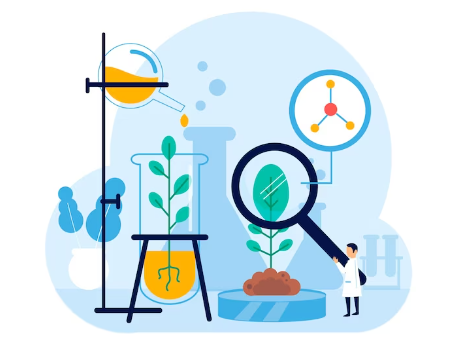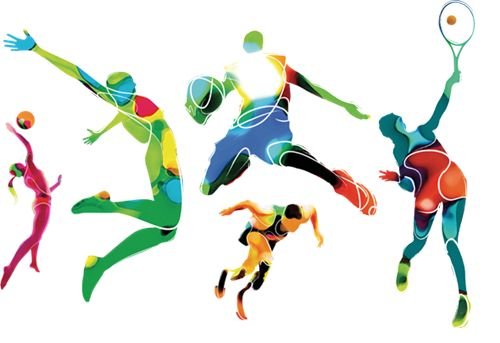- Machine Learning
- Python
This project introduces an innovative approach to plant disease detection using machine learning, specifically convolutional neural networks (CNNs). By analyzing digital images of plant leaves and incorporating environmental factors, the project can accurately detect diseases early on, promoting sustainable agriculture. The machine learning models are trained on a diverse dataset, ensuring adaptability across different crops and diseases. The project’s user-friendly interface allows farmers to receive real-time feedback, empowering them with actionable insights for effective crop management. Overall, this automated plant disease detection project aims to enhance crop productivity, reduce losses, and strengthen agricultural resilience.
- Convolutional Neural Networks
- Image Processing
- Machine Learning
- Python
Explore an intelligent and adaptive virtual assistant implemented in Python, revolutionizing human-computer interactions. Leveraging natural language processing (NLP) and machine learning, this system excels in voice commands, chat interactions, and dynamic responses tailored to user preferences. Adapting based on user history, it integrates external APIs for diverse functionalities and ensures scalability for additional features. Evaluation metrics demonstrate its effectiveness in accurate interpretation, relevant information provision, and dynamic conversational adaptability. This research contributes to human-computer interaction, presenting a framework for intelligent virtual assistants using Python. With applications in smart home automation, personal productivity, and accessibility tools, it highlights Python’s significance in creating adaptive virtual assistants.
- Human-Computer Interactions
- Natural Language Processing
- Machine Learning
- Python
This Python implementation introduces a car sound-based classification system utilizing Convolutional Neural Networks (CNN), implemented with TensorFlow and Keras. Trained on a diverse dataset, the CNN effectively distinguishes car-related sounds, displaying high accuracy. The system’s robustness to environmental variations positions it for applications in automotive diagnostics, smart cities, and intelligent transportation. This research contributes to audio signal processing and machine learning, providing a scalable solution for categorizing car sounds across diverse settings, fostering advancements in automotive technologies.
- Convolutional Neural Networks
- TensorFlow
- Machine Learning
- Python
Exploring the realm of biometric authentication, this study delves into dorsal hand vein patterns as a distinctive and secure means of identity verification. Employing non-intrusive near-infrared sensors, dorsal hand vein images undergo sophisticated processing using advanced machine learning algorithms, including Convolutional Neural Networks (CNNs). The resulting authentication system undergoes rigorous training, validation, and evaluation using key performance metrics. Comparative analyses underscore the unique advantages of dorsal hand vein authentication, while addressing practical considerations such as user acceptability and ethical implications. This non-intrusive and forgery-resistant biometric method contributes significantly to the field of secure identification, finding potential applications in finance, healthcare, and secure facility access.
- Convolutional Neural Networks
- Dorsal Hand Vein
- Django
- Python
A turf playground serves various sports like football, rugby, tennis, cricket, etc. Popular for safety and vibrancy, schools and clubs prefer it for practice. Booking can be challenging due to timing. This website streamlines bookings with Admin, Manager, and User modules. Admin manages locations, assigns managers, sets prices, and monitors bookings. Managers handle requests, approve bookings, generate bills, and oversee history for specific locations. Users check availability, provide personal details, make payments, and review past bookings.
- Sports Booking System
- Turf Playground
- Dotnet
- Machine Learning
- Python
Crop disease diagnosis in agriculture research is crucial. Distinguishing fine-grained crop diseases is essential, as treatment methods vary. We use Image Processing and deep learning to create a system for accurate crop disease identification. Our model, MDFC-ResNet, works across species, coarse-grained, and fine-grained diseases. It incorporates a compensation layer to fuse multidimensional recognition results, outperforming other deep learning models in practical agricultural use.
Module Description
Image Acquisition
Images of crops are captured using cameras or drones.
Preprocessing
The images are preprocessed to remove noise and enhance the features of interest.
Segmentation
The images are segmented into regions of interest, such as leaves, stems, and fruits.
Feature Extraction
Relevant features are extracted from the segmented regions, such as color, texture, and shape.
Classification
The extracted features are used to classify the regions as healthy or diseased using machine learning algorithms
- Agricultural Technology
- MDFC-ResNet Model
- Django
- Python
A club management system project that provides and manages various club activities such as member registration, registration for various regular and vacation batches and more. The sports club management system software is a .NET built system that manages the entire club activities and provides respective functionality for various types of visitors. This system is built with respect to managing a cricket club. It allows normal users to avail for club membership, book the ground at for desired days and even enroll for various activities in the club. The sports club management system is built keeping in mind various various daily activities of a cricket club and the software automates all these club functionality for easy operation of the club.
- Club Management
- Sports Club Software
- Django
- Python
This project aims to develop an efficient online invoicing application using Django, a Python web framework, following the Software as a Service model. It streamlines financial transactions, offers cost savings, and enhances business operations, emphasizing modern technology for tax transparency. Built with Django for the back-end and HTML/CSS for the front-end, the system provides a comprehensive user interface for generating bills and managing customer information. It also supports saving invoices in PDF format, offering businesses of all sizes a valuable tool for simplifying invoicing and improving financial visibility.
Module Description
Admin
Manage Inventory Information: Admin can add,edit, update, and delete products ,price,sellers.
User
Profile: Add, Delete and View User profiles Manage cart ,purchase product ,generate invoice.
- Django Framework
- Online Invoicing
- Machine Learning
- Python
Study and Analysis of Implementing a Smart Attendance Management System Based on Face Recognition Technique using OpenCV. We can make our Attendance Management System (AMS) intelligent by using a face-to-face recognition strategy. For that, we have to fix a CCTV camera in the classroom at any point, which makes a person’s picture at a fixed time and tests a face-to-face image. Traditionally, student attendance at the institutes is manually reported on the attendance sheets. It’s not a productive operation, because it takes 5 or more minutes for attendance. Normally, the length of our class is 50 minutes, and every day we have more than 5 lessons. So, both courses take more than 50 minutes, which is almost the same as our class time. To solve this big issue we are proposing a novel automatic technique namely “Face Detection with OpenCV”.
- Attendance Management System
- Face Detection
- OpenCV




